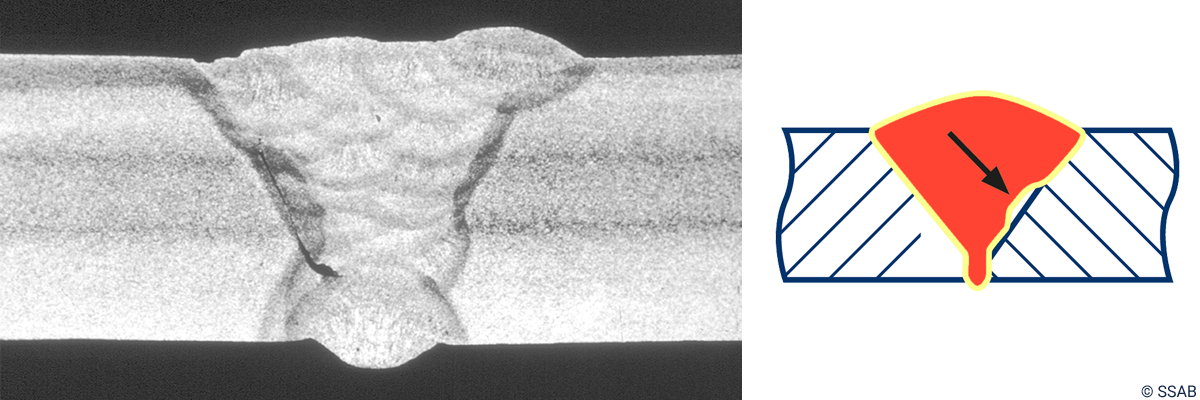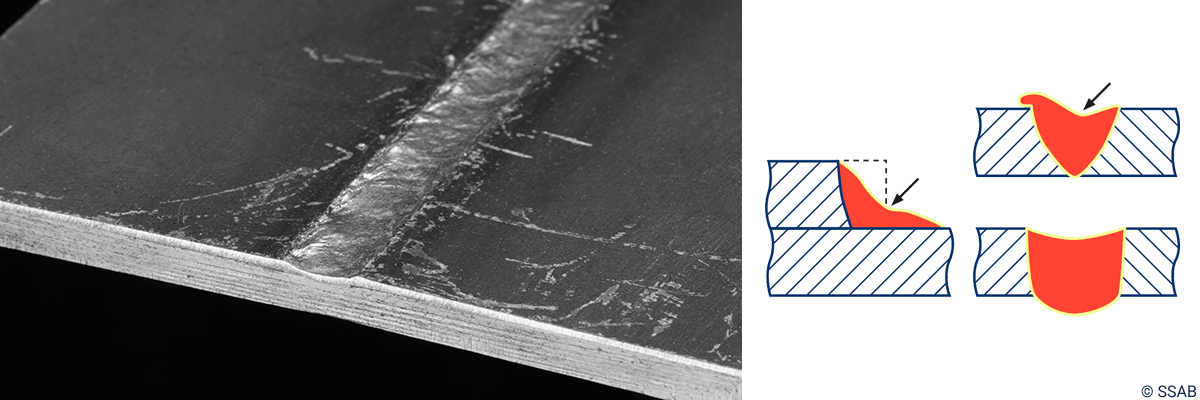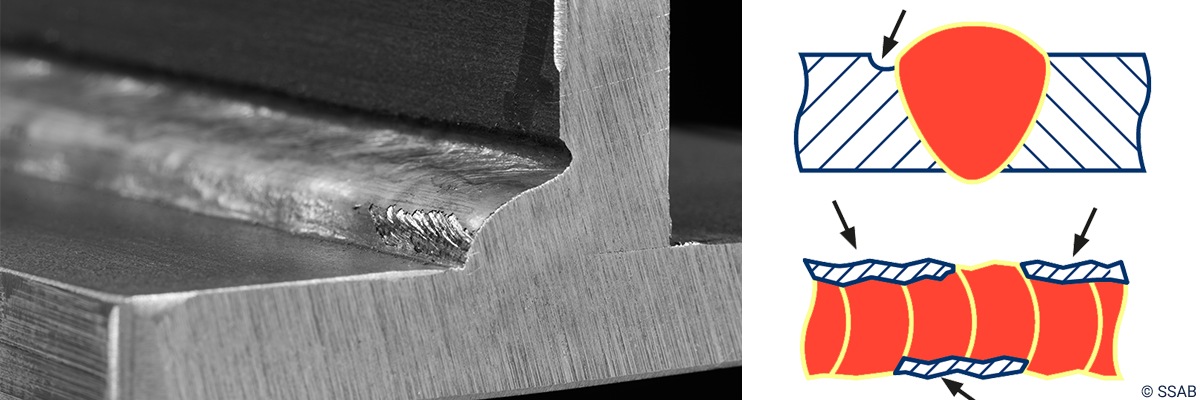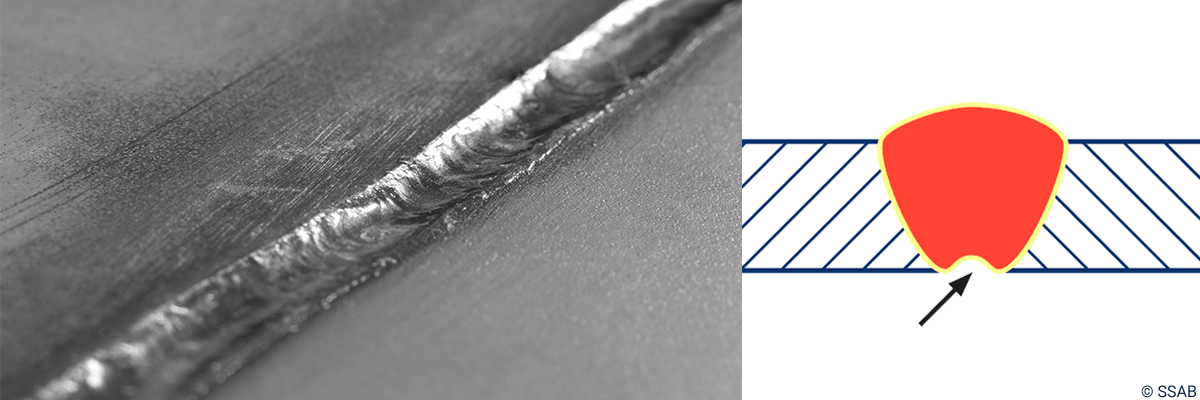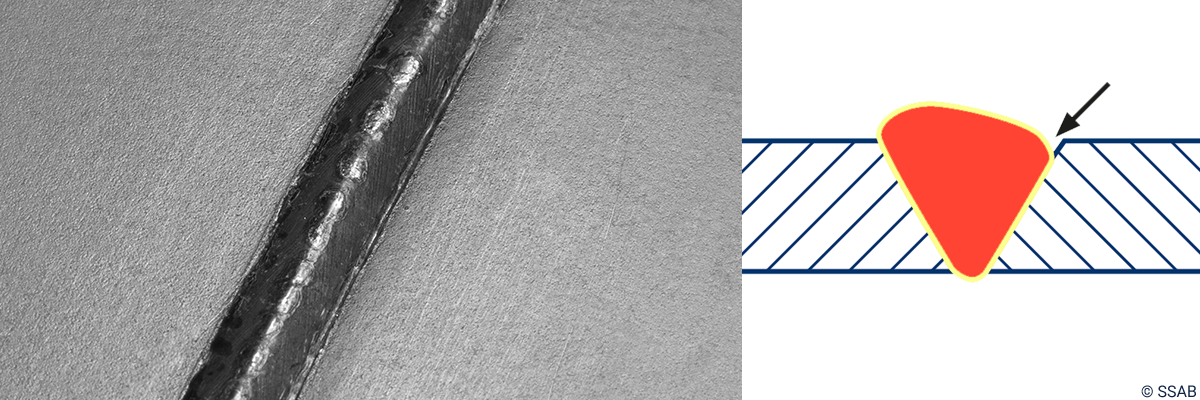Discontinuities, including different types of cracks, can occur during welding of every type of steel. However, they can always be avoided. The Hardox® and Strenx® steel grades do not have any particular sensitivity to the discontinuities described in this context compared to other types of high strength steels.
Some types of discontinuities can be called defects. The meaning of these two terms differs to some extent.
- A discontinuity is an interruption of the physical structure of the weldment
- A defect is a discontinuity that causes the weldment to be unable to meet the specified requirements of the structure
Consequently, a defect needs to be removed and corrected in the structure. Other types of discontinuities can thereby be allowed in the same. In other words, a certain kind of discontinuity is a defect in certain structures and in others not.
Here are 11 typical discontinuous with a short texts about:
- Possible causes
- Suitable actions to avoid them
Sagging or weld concavity
Porosity
Cause
- Impurities in the joint (moisture, oil, corrosion, etc.)
- Disturbing breeze
- Too high gas flow
- Too low gas flow
- Shielding gas contaminated (equipment)
- Injector effect
- Surface coating (zinc, primer)
Remedial actions
- Keep the joint free from any impurities
- Control the equipment
- Control the gas flow
- Welding technique (torch angle)
- Remove surface coating
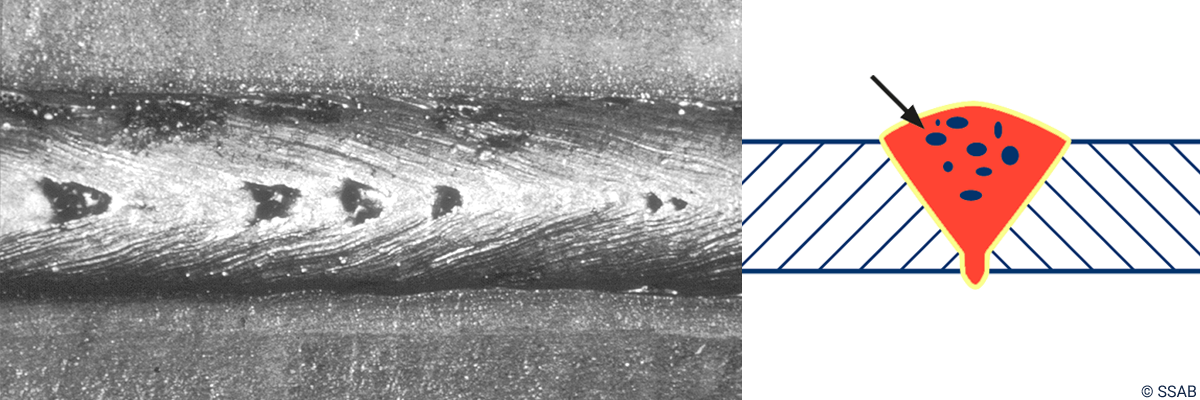
Lack of penetration or root defect
Cause
- Too small joint angle
- Too small gap
- Too large root face
- Wrong welding technique
- Too low heat input
Remedial actions
- Increase the joint angle (45 – 60°)
- Increase the gap
- Adapt the root face in relation to the heat input (1 – 2 mm)
- Decrease the oscillation of the electrode
- Increase the heat input
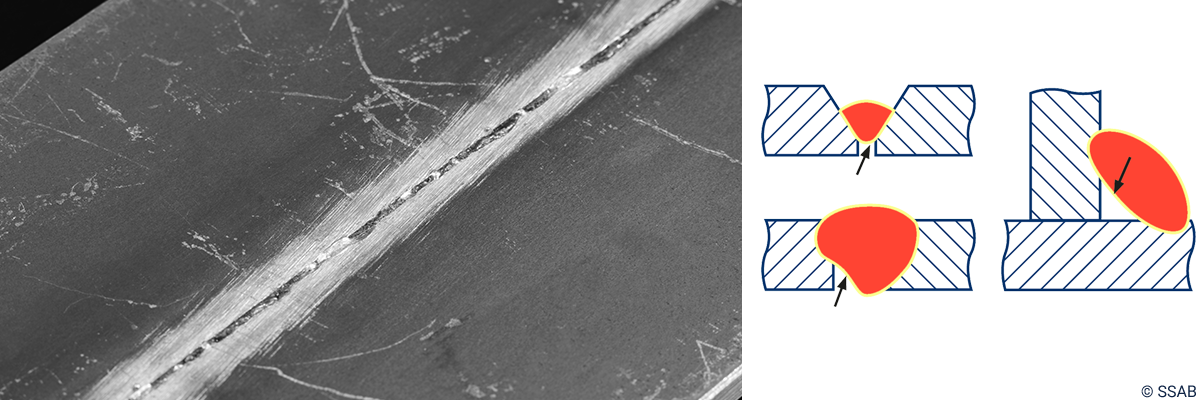
Excessive penetration
Undercut
Hot crack or solidification crack
Pipe
Root concavity
Incompletely filled groove
Spatter
Lack of fusion
Cause
- Travel speed too low (weld metal starts to flow in front of the arc)
- Travel speed too high
- Arc voltage too low
- Too long “stick out” distance
- Contact tip worn out
- Insufficient inter-run cleaning
- Welding in inclining position (downhill)
Remedial actions
- Increase the travel speed
- Decrease the travel speed
- Increase the arc voltage
- Decrease the stick out distance
- Replace the contact tip
- Remove the surface slag prior to next run
- Adjust the travel speed in relation to the position
